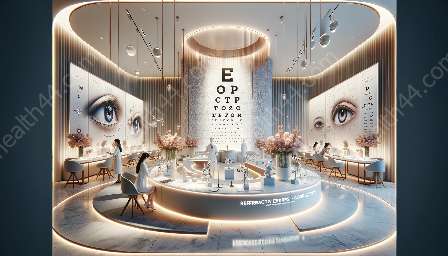Refractive errors are common vision problems that can be corrected through various means, and wavefront technology has emerged as a revolutionary method for precise and personalized refractive correction. This comprehensive topic cluster provides insights into the principles, techniques, and benefits of wavefront technology and its compatibility with refractive errors and correction, as well as its significant impact on vision care.
The Fundamentals of Refractive Errors and Correction
Before delving into wavefront technology, it's essential to understand the nature of refractive errors and the traditional methods of correction. Refractive errors occur when the shape of the eye prevents light from focusing directly on the retina, leading to blurry vision. The common types of refractive errors include myopia (nearsightedness), hyperopia (farsightedness), astigmatism, and presbyopia. Correcting refractive errors typically involves the use of glasses, contact lenses, or surgical procedures such as LASIK, PRK, or implantable lenses.
Introduction to Wavefront Technology
Wavefront technology has revolutionized the field of refractive correction by offering a highly advanced and personalized approach to vision enhancement. At its core, wavefront technology utilizes a wavefront sensor to measure the unique visual imperfections of an individual's eyes. These imperfections are then used to create a customized treatment plan that addresses not only common refractive errors but also higher-order aberrations, which are more complex irregularities in the optical system of the eye.
The Advanced Techniques of Wavefront Analysis
One of the key aspects of wavefront technology is its ability to perform an in-depth analysis of the entire optical system of the eye. By capturing a detailed map of the eye's aberrations and irregularities, wavefront analysis goes beyond traditional measurements of refractive errors to provide a comprehensive understanding of the eye's optical architecture. This enables eye care professionals to tailor refractive correction treatments with unparalleled precision, resulting in improved visual outcomes and reduced risks of side effects.
The Benefits of Wavefront Technology
Wavefront-guided refractive surgeries, such as wavefront-optimized LASIK or PRK, offer several distinct advantages over conventional procedures. These benefits include enhanced visual acuity, reduced occurrence of glare and halos, improved contrast sensitivity, and a lower likelihood of inducing higher-order aberrations post-surgery. Additionally, wavefront technology has been instrumental in addressing the individual variability of visual imperfections, making it an ideal choice for patients seeking optimal outcomes in refractive correction.
Compatibility with Vision Care
Given its precision and customization capabilities, wavefront technology aligns seamlessly with the overarching goals of vision care. Through its ability to address both common refractive errors and higher-order aberrations, wavefront technology contributes to improved visual quality and patient satisfaction. Whether incorporated in laser refractive surgeries or advanced contact lens designs, wavefront technology has expanded the possibilities for vision care providers to deliver tailored solutions that cater to the unique needs and preferences of their patients.
Conclusion
Wavefront technology has redefined the landscape of refractive correction, offering a sophisticated approach that transcends traditional methods and enhances the overall quality of vision care. Its compatibility with refractive errors and correction, as well as its transformative impact on vision care, underscores the significant role that wavefront technology plays in advancing the field of ophthalmology and optometry. As technology continues to evolve, the promise of wavefront technology in delivering personalized and precise refractive correction remains at the forefront of innovation and excellence in vision care.


